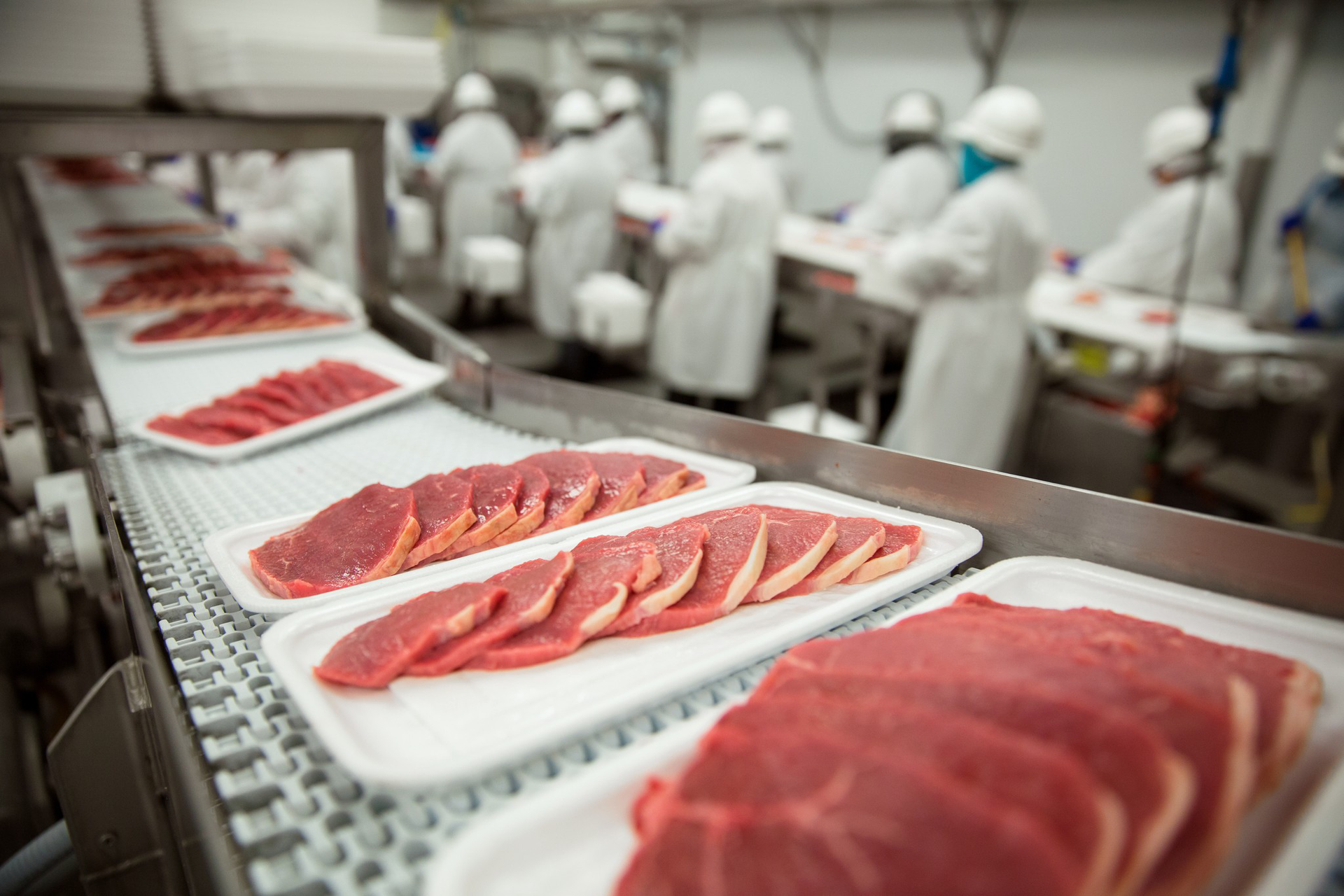Almost a trillion euros annually: That is the value of food produced worldwide but not consumed. Approximately one fifth of this large amount of food is already wasted during processing and production. Although food manufacturers follow financial and ethical incentives to reduce food waste, it is a challenge to reconcile these efforts with the strict food safety regulations. Innovative technologies can help: They contribute to reducing food waste, increasing profits, and improving the quality and safety of industrial food products.
The Food and Agriculture Organization of the United Nations (FAO) estimates that food waste worldwide amounts to almost 1.3 billion tonnes per year. About one third of all food is thrown away. The result is wasted natural resources, labor, and capital. Furthermore, discarded food is one of the main sources of avoidable greenhouse gas emissions.
The problem with food waste cannot be attributed to just one actor in food production. It occurs at every stage of production and consumption, and the amount of waste varies regionally. In developed nations, it is the end consumers who are responsible for the majority of food waste. A different picture emerges in developing countries: the FAO cites a lack of infrastructure between farmers, manufacturers, and retailers as the main source of food waste.
Food waste in Germany by sectors in the value chain – 2015
| Stage in the lifecycle of food production | Food waste in million tonnes | Proportion of food waste |
| Agriculture | 1.36 | 12% |
| Food processing and manufacturing | 2.17 | 18% |
| Distribution and market | 0.49 | 4% |
| Food Service (Catering) | 1.69 | 14% |
| End consumers | 6.14 | 52% |
In industrialized nations, almost one-fifth of food is wasted during manufacturing and production. This situation creates incentives for change: not only for the benefit of the environment, but also financially.
Profit margins are declining and the pressure to increase productivity continues to grow. Therefore, measures to reduce food waste may be necessary to remain competitive in a changing market.

Food Waste: Causes in Food Production
The causes of industrial food waste are diverse. Some are avoidable, while others are practically inevitable. In the topic of food waste, inefficient working methods and insufficiently trained employees are particularly highlighted as one of the main causes. A study conducted by Brunel University London and Ghent University found that approximately 11% of all food waste is due to human error during the production process. However, unforeseen power outages, natural disasters, or equipment failures can also be responsible for significant product losses.
Paradoxically, food safety regulations are also responsible for food waste in the production process. The premise is clear: contaminated or otherwise defective products must be reliably avoided according to globally applicable food safety standards. Therefore, every risk is treated consistently. In plain language, this means that even the slightest probability of contamination leads to the disposal of all potentially affected products.
Modern technologies in food safety contribute to reducing food waste.
This zero-tolerance approach is important to protect consumers from diseases and injuries. However, non-optimized inspection systems lead, among other things, to inadequate traceability, product recalls, and the erroneous release of a disproportionately high amount of non-contaminated food.
The solution: Optimized technologies for the precise identification of contaminants. They enable compliance with strict food safety standards while minimizing unnecessary waste. How exactly optimized inspection systems contribute will be explained further on.
1. The early detection of contaminated products
The end-of-line product inspection is an essential component of any facility in food production. It must always be ensured that all packaged products are free of contaminants for their further journey along the supply chain. However, relying solely on this final inspection has a significant drawback: valuable resources are wasted.
This is because food products can potentially be contaminated at any point in the production line. It is also possible for raw materials to enter the processing stages already contaminated. In the absence of early inspections, a contaminated food item could go unnoticed through the entire manufacturing process before the final inspection. The consequence: Not only is the contaminated food lost, but so is all the value added (energy, ingredients, resources) that has been invested in the product’s processing up to that point.
The key to pure food is a well-thought-out, multi-stage concept for the early detection of contaminants at all critical control points in the production process. When food is inspected not only at one, but at several control points along the production line, this brings significant advantages for both companies and the environment. With the integration of advanced detection technologies at strategic points in the processing – for example, after mechanical processes such as milling – contaminants are immediately identified and sorted out at the source of their origin. This prevents valuable resources from being invested in products that are later destroyed. It also prevents the contamination of other products in a batch. Additionally, precise data for tracing contaminated products is obtained.
2. Avoiding food waste caused by product recalls
Food recalls are increasing worldwide. In Germany alone, the number of food recalls more than doubled between 2012 and 2019. Product recalls are essential to prevent diseases or injuries from contaminated food. However, with regard to food waste, product recalls are often concerning, as food recalls affect not only contaminated products.
As a rule, all food products in an affected batch are disposed of. It only takes a single contaminated product on the market to lead to the destruction of thousands of kilograms of pure, edible food.
It is also a fact that no food manufacturer wants to recall their products. Because regardless of the wasted resources and incurred costs associated with recall actions, they further damage the reputation of a company.
Reliable inspection technologies for food safety provide a remedy. They protect consumers from injuries, reduce the amount of food waste, and safeguard companies from negative public perception.
3. Minimizing erroneous releases due to product effects
One challenge for the reliable identification of metal contaminants is the so-called “product effect.” Some food products, such as fresh fish, meat, or dairy products, have a moisture and salt content that produces a certain electrical conductivity. This can lead metal detectors to register a possible contamination even in perfectly fine food.
International food safety standards require that any potentially contaminated food product be removed from production. It is irrelevant whether this exclusion is actually due to contamination or merely to the product effect. Metal detectors that are not properly adjusted for the product effect (product effect compensation) thus promote erroneous releases and, consequently, food waste.
Innovative metal detectors already use artificial intelligence for so-called challenging products such as meat, fish, and dairy products, which generate strong effects, and can thus almost completely eliminate the product effect. Through this new AI-based method, food waste can be reduced while simultaneously increasing detection performance.
In certain applications, X-ray technology can also be a good alternative to prevent food waste caused by erroneous releases due to the product effect.
Conclusion
To sustainably minimize food waste, all stakeholders in the value chain must take appropriate measures within their means. Financial and ethical incentives to minimize industrial food waste can conflict with precautions designed to safeguard food safety. Here, innovative, precise inspection technologies help to meet both objectives: on one hand, they reliably protect consumer health; on the other, they prevent the waste of large quantities of food and valuable resources.

